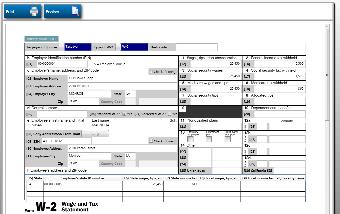Common Tax Mistakes
January through April can be a stressful time for us in the tax industry. We want tax returns to be done quickly and efficiently, but each return has its own complexities. To reduce stress and help tax professionals, here’s a quick guide to the most common errors on a tax return and how to avoid them using Taxware Systems’ software.
Social Security Numbers and Names: Some of the most common errors in a tax return are missing or wrong social security numbers and names. In the Taxware Systems programs, if a social security number is missing or does not have enough digits, the validity check on the Summary Menu will be red. That means that something in the basic information is incorrect, and the return will most likely be rejected. Make sure that the social security number and name on your client’s tax return matches exactly what is on the social security card.
Filing Status Errors: Another common error can be a filing status error; filing as head of household instead of single, for example. In the software, the filing statuses can be found under Basic Information Line [03]. If the filing status needs to be changed, click on the grey box with three dots next to the status and you will see the full list of options. Select the correct status by double clicking on it.
Math Errors: Most of the calculations are automatic with the Taxware Systems programs, but do make sure that the amounts you type in match the forms that your client provides.
Credits and Deductions: Many errors come about because of Earned Income Tax Credit, the standard deduction and the more complex credits. If you do need to fill out credits such as the EITC, Child Tax Credit or American Opportunity Credit, certain questions marked in red must be answered in the new due diligence found on the top left hand side of the 1040 line input. If the status of “Standard Deduction OK” needs to be changed, go to Line [25] Special Filing Categories and click on the grey box with three dots and double click on the status you need.
Note: If a return is rejected, correct the problem and transmit the return again. If a return has already been accepted with an error present, the IRS will correct simple math errors or notify you of a missing form. If there is a larger error, such as a filing status or a missing W-2, you will need to prepare an amended return.
If you have questions, feel free to contact us!
support@taxwaresystems.com
1-800-877-1065








